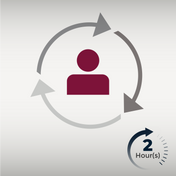Karen Miller, BSN, RN
Mrs. Miller received her Bachelor of Science Degree in Nursing from Jacksonville University (JU) in Jacksonville Florida in 1993. She has experience with skin care management in pediatric and adult populations. This experience was acquired while working in the specialized field of Wound Care
Nursing in a Long-Term Acute Care Facility and in Acute Care Health Systems that served both pediatric and adult patients. As a Certified Wound Care Nurse (CWCN), Mrs. Miller taught skin and wound care in orientation classes in the facilities where she worked. She also served as a Guest Lecturer at her Alma Mater (JU) and at Florida Community College, Jacksonville. Mrs. Miller’s
personal goal is to help equip medical staff with the knowledge base and practical skills that will enable them to deliver the best care possible to their patients, clients, and residents.

















